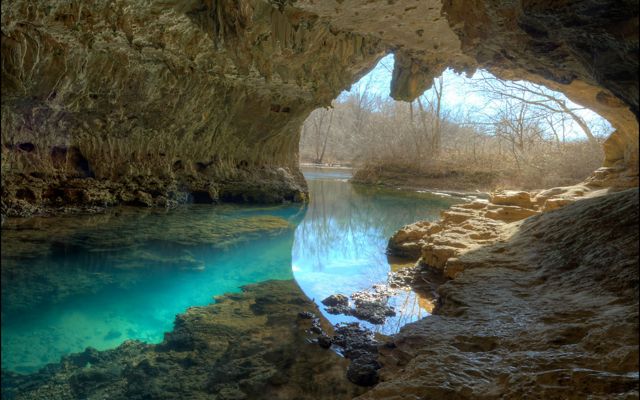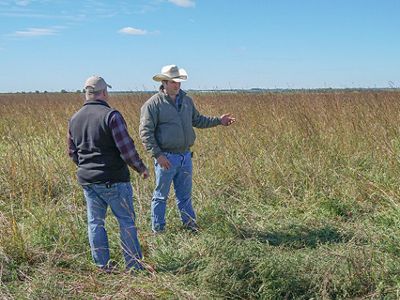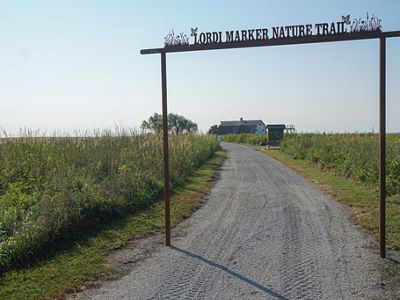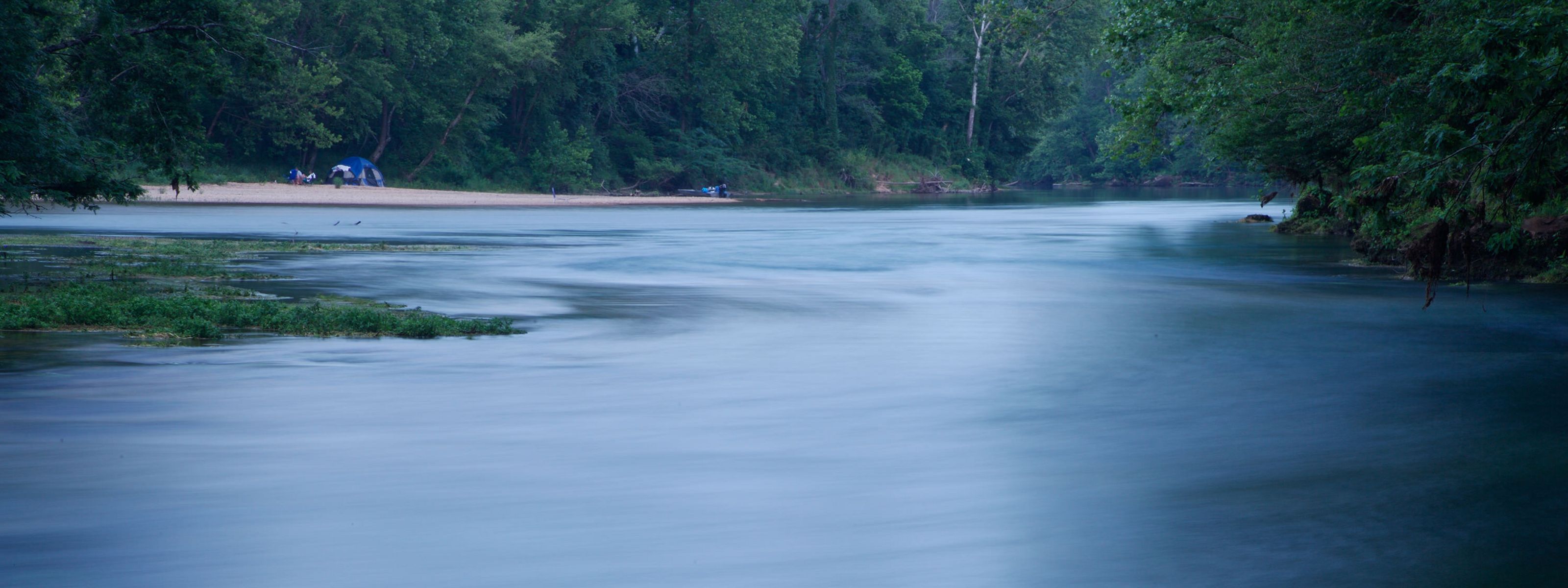Missouri Land Protection
Preserving habitats and safeguarding Missouri's iconic landscapes.
Missouri packs a world of landscapes into one state. Deep-rooted prairies adorned with hundreds of species of grasses and wildflowers. Caves that number in the thousands. Ancient Ozark Mountains that predate the Rockies by more than a billion years.
More than 100 natural communities live within Missouri’s unique terrain and habitats. Variety is embedded in the state’s marrow, but it will take a dogged effort to carry it into the future. Twin crises of plunging biodiversity and a changing climate are playing out around the globe. Missouri is not immune.
The Nature Conservancy took up the mission to conserve and protect Missouri’s vital landscapes more than 60 years ago. TNC works to boost biodiversity, repairing and nurturing the habitats that shelter native plants and wildlife. That has long included stewarding our preserves, but the mission extends beyond property lines.


More than 93% of land in Missouri is privately owned. At TNC, we are honored to support the conservation efforts of a growing number of those landowners, whether that is helping brainstorm ways to preserve a favorite hiking trail, safeguard free-flowing rivers or keep a family farm intact for future generations through smart planning.
Our work with individuals and partners has helped TNC protect more than 150,000 acres across the state. Each acre is a victory, conserving the landscapes that energize the economy, benefit our health and shelter wildlife. Those victories preserve Missouri’s natural heritage while championing its future.
Three Ways The Nature Conservancy in Missouri Supports Land Protection
1. Preserves
The Nature Conservancy owns and manages a network of preserves that total nearly 12,000 acres in Missouri. They include sprawling grasslands, Ozark savannas and picturesque river lands. We know connecting people to nature is good for both, so most of our preserves include public access.
These lands serve multiple purposes for conservation. They offer physical locations for researchers studying Missouri ecosystems and demonstration sites where people can kick the tires on multiple restoration practices. They are also training grounds for a new generation of conservation professionals learning to do everything from safely managing prescribed fires to collecting seeds from native plants.

Dunn Ranch Prairie in Harrison County is a prime example of how we leverage our lands for people and nature. The nearly 4,000-acre preserve is a popular spot for visitors, who can follow a self-guided tour from kiosk to kiosk as they learn about the tallgrass prairie that once dominated much of the United States. But it is also a living laboratory for testing restoration practices and attracts researchers from universities across the country.
Dunn regularly hosts prescribed fire training events, and the Little Creek Farm portion of the preserve is a working demonstration of sustainable grazing practices. In recent years, Dunn has become one of the sites hosting TNC’s new Centers for Conservation, a program designed to offer opportunities to research natural systems, educate the public and test new conservation strategies in a real-world setting.
The preserve also serves as an important piece of the Grand River Grasslands and Central Tallgrass Prairie. Landscape-scale grasslands are crucial for birds, butterflies and other species that need room to roam.
2. Land Protection Agreements
Every Missouri landscape is unique, and not just in terms of biodiversity and ecology. Each tract carries a legacy of the people who have watched over the land through the years—homesteads and farms passed down through generations, memories of friends and families who gathered to connect with nature and each other.
Our land protection program is rooted in a shared mission with landowners to conserve the natural character of properties they have poured their lives into sustaining. We work together as partners to craft protection agreements that carry forward owners’ wishes. More than anyone, they know what’s lost when treasured forests and historic grasslands are wiped out by overdevelopment or careless management.
TNC has a long history of tailoring voluntary agreements to individual properties. The biodiverse Ozarks in particular have been a point of interest. In 2007, with the help of generous donors, TNC established the Ozarks Conservation Buyers Fund to protect vulnerable land around the Current and Jacks Fork rivers.


The fund allows TNC to buy properties and craft land protection agreements to conserve the quality of the water, trees and other critical natural features. TNC then resells the properties and returns the proceeds to the fund to buy more properties. The fund has helped protect more than 12,000 acres.
That work is evolving to expand across the one-of-a-kind karst system that ranges through the Interior Highlands region of Missouri, Arkansas and eastern Oklahoma. Characterized by caves, sinkholes and springs, karst systems harbor a number of species that live nowhere else.
Protecting these vulnerable ecosystems requires building trust with private landowners and other conservation partners. Those relationships take time, but they are worth it. Each one helps knit a landscape together, with lasting results for conservation and community.
3. Bridging the Gap
Missouri’s ecosystems developed across millennia, but it doesn’t take long to destroy them. Often, the most important step we take is buying time. TNC is agile by design so that we can act with urgency for nature, and we have been doing exactly that for decades.
In 1991, when one of the last big commercial timberland owners in Missouri decided to divest and put giant swaths of Ozark forests and glades on the open market, TNC worked quickly to protect as much of those irreplaceable ecosystems as possible. The Nature Conservancy served as the initial buyer for more than 80,000 acres in a deal that eventually transferred the property to the Missouri Department of Conservation (MDC) to create public conservation areas.

TNC’s ability to act fast gave MDC the time it needed to work through its funding process before the forests were lost forever to clear-cutting and development. As part of the collaboration, we held onto 5,000 acres for 31 years, creating the Chilton Creek Research and Demonstration Area to test and study innovative conservation techniques. The transfer of Chilton to MDC in 2022 has now reconnected the pieces from the original 80,000 acres, ensuring the property will continue to be protected while TNC uses funds from the sale to conserve more vulnerable habitats in the future.
It’s an example of the innovative ways TNC leverages resources, experience and trusted partnerships to reach big goals for Missouri’s wild places.
Want to Learn More About Our Work in Missouri?
Sign up to receive monthly conservation news and updates from Missouri. Get a preview of Missouri’s Nature News email.




